Follow the Podcast
On Spofity

Play this episode:

I’m going to start with a broad statement today. Chances are, if you have come across my blog or you found yourself listening to this podcast episode, you are some type of content creator. If you don’t consider yourself a content creator and you just like to listen to these types of podcasts, then you are more than welcome to hang out with us today, but this entire episode is going to be very geared towards those of you that create content in some capacity, either as a hobby, side hustle, or career. Whether you create tangible products to sell, you’re a photographer, you’re a blogger, or you’re a service-based business like myself, We all create content for our business to attract our ideal customers, to market ourselves, and to ultimately drive sales.
I think a lot of people don’t realize when they’re first starting a business, or if they’ve never started a business, how much time and effort goes into this content creation. Honestly, some weeks it feels like 80% of my job it’s just creating things for Instagram, this podcast, and now I’m supposed to throw Tiktok into the mix? And none of that even goes into the actual content that I create for my clients. I mean, granted I am a designer, so of course a lot of my business would revolve around content creation, but I’m sure you can agree that most businesses today have to constantly be creating in some form or fashion.
But also chances are, if you’re a creative, you’re probably also very in touch with your emotions. Even if you’re not the “cry at every sad movie” type of emotional, we all create and have the drive to create because of a basic need to understand our emotions and process the world around us. This is especially true if you’re an enneagram Four, since creation from an emotional state is kind of what we’re known for. And if you don’t know what I’m talking about I have a podcast all about how realizing my enneagram number impacted me as a business owner.
And let me go on a tangent here for a second and say that creating from a place of emotion does not mean a sad emotion. We’re not all EMO kids here, though there’s nothing wrong with that. One of my most inspiring emotions is the emotion tied to traveling. Whether you call it wanderlust, a desire for spontaneity, or simply the yearning to learn something new about the world, whenever I travel I have an intense emotional pull to create. I want to photograph everything, journal my every thought, sketch everything I see and diagram out new ideas, and, it never fails, but traveling always triggers me to write new music. If you didn’t know I’m a musician, well… surprise! I am!
And I know I’m not alone in this. Many writers, painters, and creatives of all walks of life, throughout all time periods have felt an immense emotional pull to create when they travel. It’s incredibly eye opening and stimulating on a creative level to see and experience new things.
Creativity has always been very tied to my emotions and they honestly drive everything that I pursue. Probably why we called them passions, right?
But what this means is that we’re so emotionally connected to the things that we create that so many content creators have a hard time looking out for our own emotional well-being. When we are our business, and when we are creating everything for that business, it can be really hard to have any sort of boundaries.
Now, what do I mean, we are our business? This can mean different things for different business owners, but for me personally, it means that all content is created by me, I’m showing up as myself on every platform, and when someone gets in contact with my business I’m the one answering every DM and email. There is no large company behind the scenes and everything should look and sound like me, because, well, it is me.
So what happens when someone comes along and they don’t like what you create? Or maybe they just totally didn’t get it? Or, sometimes the hardest thing to deal with, maybe a dream client or dream sponsorship doesn’t want to work with you for whatever reason? All of these things can feel so personal, almost like an attack, especially when you are your business. When in reality most of this has nothing to do with you as the creator and instead solely relies on that person that’s consuming your content.
Maybe the person that didn’t understand your content just doesn’t know enough about the subject to value your input. Maybe the person that didn’t like your content prefers something else instead. And maybe the person or company that chose not to work with you just wasn’t your type of client anyway.
We have to remember that the average person that’s coming across our stuff on Instagram or on Pinterest is only taking it at face value. They don’t see the idea that sparked this content. They don’t see the countless hours spent troubleshooting and figuring out the best way to show it off to the world. They don’t see how excited you were to finally launch your business for everyone to see. And, annoyingly, people on the Internet for some reason don’t always seem to realize that there’s a real human behind the scenes.
All the more reason to not take it personally. But that’s easier said than done, especially when you’re an emotionally driven person. The fact of the matter is, you can’t control the people that come across your content. You can only control yourself, how you feel about it, and how you use your content in the future.
Let me backup for a second. Maybe you’re not an emotionally driven person. Maybe you create content as a tangent to something else that you care more about. Or maybe you create content simply because you feel like you have to. Either way, if you create in any form or fashion, I guarantee you probably feel some connection to the content you’re putting out into the world. After all, if it’s going out with your business name on it, you should care.
All this to say, you have to be able to protect yourself when running a business and not take things personally. At some point in your business journey someone somewhere will probably say something that rubs you the wrong way. That sounds vague, but it’s also bound to happen.
Now for someone like myself that has spent basically their entire life creating art for art shows, dancing competitively, playing music in front of small crowds, and now creating brands and websites for people all over the world, I feel like I’ve learned a thing or two about how to handle these situations and protect my own emotional well-being. This is not something that comes naturally to me. In fact, it’s something I’ve had long talks with my parents about (who are also entrepreneurs, by the way) and something I also have had to learn just going through critiques in design school.
Opinions are subjective
In today’s current political climate we know that opinions are subjective. I mean duh, they’re opinions. But this is certainly true with anything that’s easy to consume online especially on social media profiles. People aren’t going to identify with everything that you put out there, and honestly that’s totally OK.
I’ve recently gotten into watching several YouTube accounts and it’s very interesting to me to see how different people handle hate comments. These people that I think are hilarious and honestly are just trying to put positive vibes out into the world, still get hate comments. It’s bound to happen on the Internet when you have any sort of following. Again I’m not sure why people don’t understand that there’s a real human behind the screen, but it’s just something we can’t control.
The idea for this podcast actually started the other night when a blogger that I follow talked about people commenting on her weight in a recent video she posted. She was floored because a lot of the comments were “well-meaning“ but they still targeted an insecurity of hers. But like, she’s beautiful and has had three kids so who are they to comment on her weight.
The interesting thing about all of these instances is that while these unwelcome comments may get under the content creator’s skin, they’ve all handled these situations like total champs. At the end of the day they recognize that for every snide comment they get, there are hundreds if not thousands of positive comments on either side of it. As difficult as it may be to recognize that not everyone will like or identify with your content, you have to change your focus to the people that DO like and connect with your content. Those are the people that will buy from you, send more work your way, and champion your business all day, everyday. And they deserve all your love and attention right back.
Distance the artist from the art
You’ve probably heard the statement made when looking at famous people like actors or musicians. You can appreciate the craft or art a person creates without necessarily liking the person. But I want to flip the script on its head. I want you to distance yourself from your own art.
Yep, even if you are your business and you are the one showing up for it every single day. Even if you’re pouring every creative ounce that you have into your work. I want you to see that your work is not the only interesting thing about you. You are SO much more than what people are seeing online.
I remember when I was younger I would show my parents something I had drawn and if they said anything other than “it’s perfect“ I was crushed. Feedback is a hard thing to take sometimes, and it certainly was for a people pleaser, perfectionist like myself. Now my parents are both extremely accomplished artists in their own right and when they would give me pointers or things that undoubtedly made my art better, I was so attached to it that I couldn’t even listen to what they had to say because it just felt crushing to me.
Fast forward to today. I encourage my clients to tell me when they don’t love something because if all they ever said was “it’s perfect” and they didn’t really mean it but they just didn’t want to hurt my feelings, I wouldn’t be doing my job. With every concept I send, I specifically ask “What do you like about this concept?” and also “What do you dislike about this concept?” That way I know I’m getting their full opinion so that I can tweak my work to be something they LOVE.
So how did I go from caring about everything so much but I couldn’t even handle the slightest comment about it, to now wanting that sort of collaboration and constructive criticism? Over the years I realized that constructive criticism is just that. It’s meant to be constructive. In the long run it is making you better. And it is NOT, I repeat, it is not an attack on you personally.
This goes even for Internet trolls. Even if they are trying to attack you personally, you can’t control what they will do, but you can decide whether or not to take it personally. If someone has a comment to make about your photography, your blog post, the products you sell, or the work you create, recognize that it is not a comment about you nor does their opinion matter when it comes to showing up the next day and showing off what you do all over again.
Distance yourself enough to have your work be your work and have yourself be separate. It’s easier said than done, but with practice, you’ll find so much more peace of mind when talking about and sharing your work when it stops feeling like bits of your soul on display for just anyone to comment on.
Have other areas of focus or hobbies that get you away from your work
Kind of going off of the last point, over the four years that I’ve been running this business I’m realizing how important it is to have other creative outlets or hobbies outside of my regular business hours. Just as it’s important to set those boundaries between yourself and your work so you avoid being personally offended when someone doesn’t connect with what you do, you should also allow yourself the personal freedom to have things that you do purely for fun outside of your job.
Now, I love my job. You can ask Mike, I spend my evenings thinking about and planning content for this business of mine. We’ve gone on long walks around the neighborhood where I’ve talked about my business nonstop. In the car I’ll be jotting down and brainstorming new ideas to try when I get home. Over dinner I’ll be talking about sales funnels and customer care situations but I tackled that day. When I say I love it, I mean it. I really love what I do.
But there HAS to be some sort of boundaries in order to have any sort of work life balance. If your work is all consuming and all you ever think about then of course your emotional well-being is completely wrapped up in your work. Even though I spend most of my waking hours thinking about my job, I still make a point to focus on other interests and to purposefully shut off my work brain at different times throughout the day. For me that takes the form of doing some sort of physical activity that I have to focus on, like playing tennis, taking a dance cardio class, or riding a bike. I also have other creative hobbies that again take my mind off of my work to-do list, like painting and drawing, or learning a new song on the guitar.
These are huge life savers for me because I’m able to boost my creativity but in a way that is nurturing instead of nagging. Creativity, and especially creating from an emotional place, can be incredibly draining. Allowing myself the freedom to take time off or to give my brain a rest is so so needed in order to avoid burnout or to avoid feeling tapped out of new ideas.
This is something we absolutely can control when it comes to our emotional well-being and it’s so important to realize when work is becoming all consuming and taking away from your personal life. Especially when you love what you do, you can’t let work be the only thing that you do.
Recognize that you don’t always have to be creating
You can probably tell that all of these points kind of go hand-in-hand. Finding other activities that you care about correlates greatly with finding periods of rest within your day to day. This can come in the form of both physical and mental rest.
We spend so much time creating content for our readers and clients and it’s easy to feel like we have to constantly be creating to keep up with others on social media. The fact of the matter is, we don’t have to always be creating.
I used to think that my Instagram strategy needed to be focused on producing fresh, new content every single day just on and on forever. But when I actually sat down and started looking at Instagram strategies from fellow designers I realized that most of them were resharing their work, just in different scenarios. Meaning sometimes they would show a mockup, sometimes they would show a photo overlay, sometimes they would show a website layout, all for the same project. And they would alternate through all of their projects in a similar manner. Same with the photographers that I follow. They rotate through their latest photo shoots in a way that makes it seem like they have constant work coming in even during their slow seasons.
The idea that we have to be constantly creating new and innovative content every second of every day is simply a product of being bombarded with so much content every hour on social media. It also means that our followers may be missing our content because of all the other posts showing up on their newsfeeds. By re-sharing our work, or sharing it over the span of several days, we stand a better chance of at least one of those images making it in front of our ideal clientele.
Now when I finish a project, I immediately gather up all of my mockups and presentation templates and figure out how I want to space them out over several months. When I do this with all my client work, plus my blog and personal projects, I end up with enough content for months of Instagram posts in advance. Once you start looking at the work you’ve already created in this way you’ll realize you actually have way more to share than you thought you did and I swear it will cut your content creation in half.
If you create enough, the things you create won’t feel as precious
This may seem to go against what I just said about not having to create all the time, but during the times that you are creating, or when you are feeling a boost in your creativity, I encourage you to create as much as you can. Creativity ebbs and flows and during the times where it is just pouring out of you, lean into that feeling and create with anything that inspires you. Not only will you end up with an abundance of ideas, and honestly some of my best ideas come from the third or fourth iteration of a concept, but you’ll also be creating so frequently that each idea won’t feel as precious.
This goes back to what we said earlier about being able to distance yourself from your work.
Imagine if you were a painter and you only painted three canvases. Maybe people really love these paintings and they sell for a ton of money or maybe you just keep them in your house because you personally love them. Regardless of how you show them to the world, these three paintings are extremely special to you and your identity as an artist.
Now let’s imagine you’re a painter but you’ve painted 300 canvases. Likely you’ve sold some if you’ve made that many, but even if you haven’t and you’ve kept them around your house, while they may still feel special to you and you love each one for it’s unique qualities, you probably won’t be as attached to each individual one as you would be with just three.
While I adore and feel connected to each of my client projects, the more client work I take on, the less I have to rely on each one to represent me. At this point in my business, my identity as a designer doesn’t just look like one style or feel directly attached to one client. I’m able to show off a new side of my creativity with each project I take on. I’m also diversifying what I’m known for and learning new things that will make my work better in the long run.
I think this was something I learned when I was in design school and I realized that what I thought was my best work freshman year looked laughable compared to my senior year work. Part of this was because I had just grown as a designer but part of this was also because I had created so many things within that time period that I no longer felt as connected to my freshman year work. Now looking at what I create for my clients compared to what I created in school, I hope that my schoolwork never sees the light of day. Chances are, if you are photographing several days out of the week, after a year you’ll be able to look back and see how much your work has changed and grown over that time period. I’m sure you’ve also seen some of those videos where youtubers react to the first videos they ever published. It’s usually embarrassing, but also very humbling to see how much they’ve improved in their craft since the beginning.
And that’s what we want as creatives, right? We want to grow, evolve, and change. Staying in one place means that we’re not developing our creativity. But to do that growing, we have to do more of the work that’s important to us.
If everything we create is so precious to us that we can’t bear to send it out into the world, how could we possibly run businesses and serve our ideal clients well. Recognizing that our art is merely an extension of ourselves and not us entirely, establishing a clear work life balance, finding areas of rest within our business, and creating when we’re inspired so that we have an abundance of content to draw from, can help us find peace with our business and with our emotional state.
As a final reminder, I want to say, it’s not easy creating content for a living, so at the end of the day be kind to yourself and be proud of all that you put out into the universe every day. Know that you are doing something with your life that is hard for everyone, and for that alone you should be extremely proud.
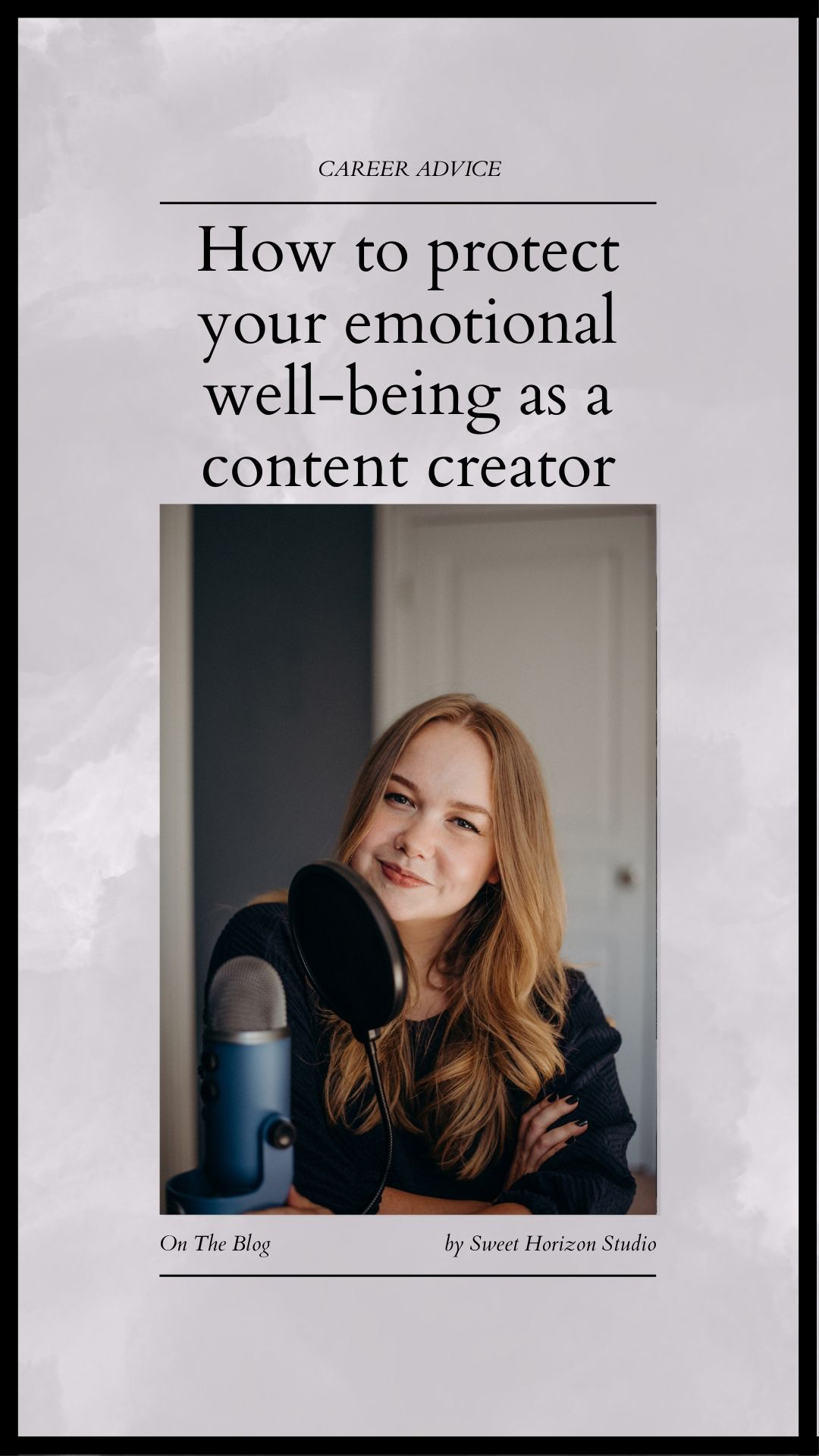
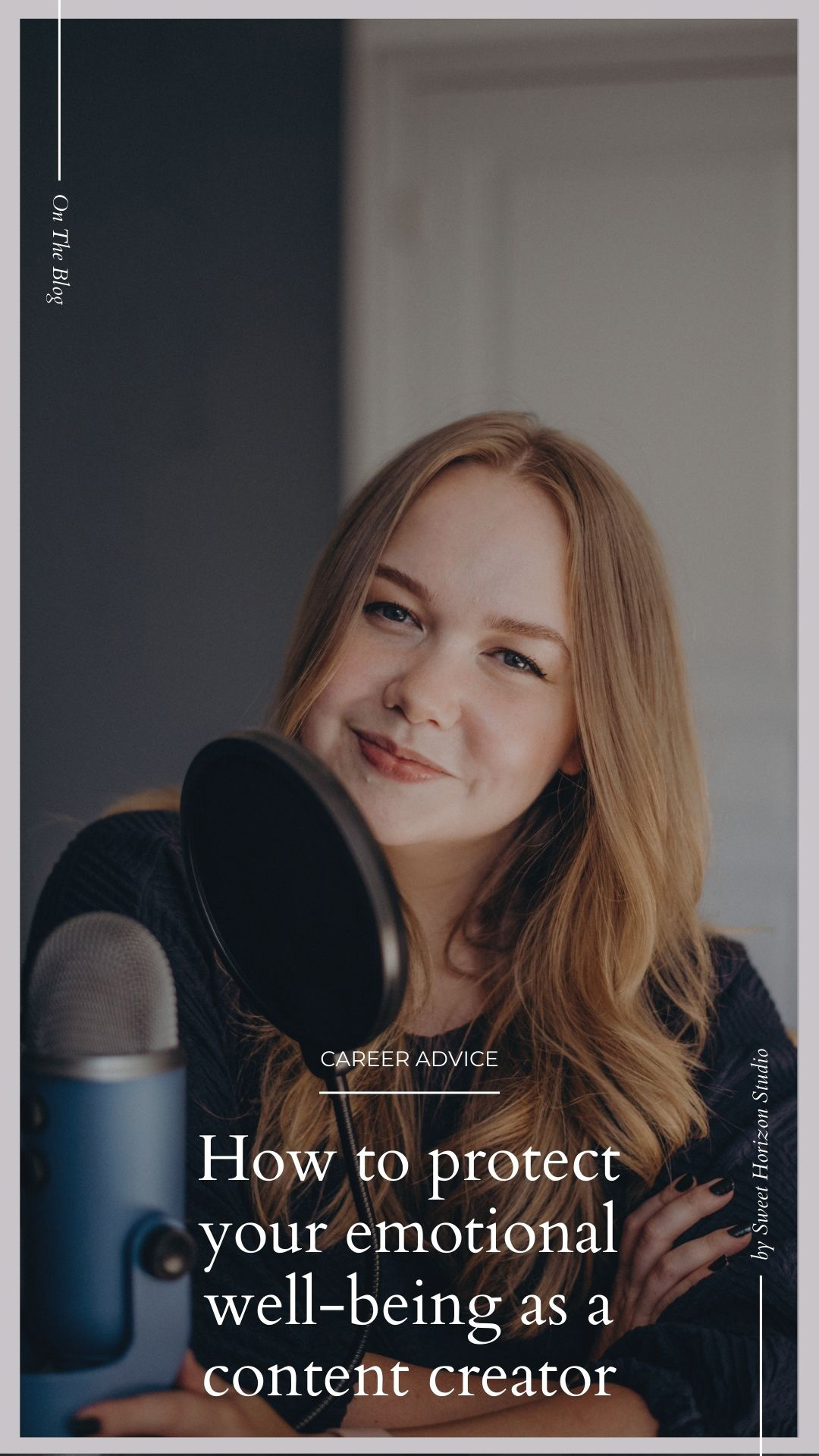
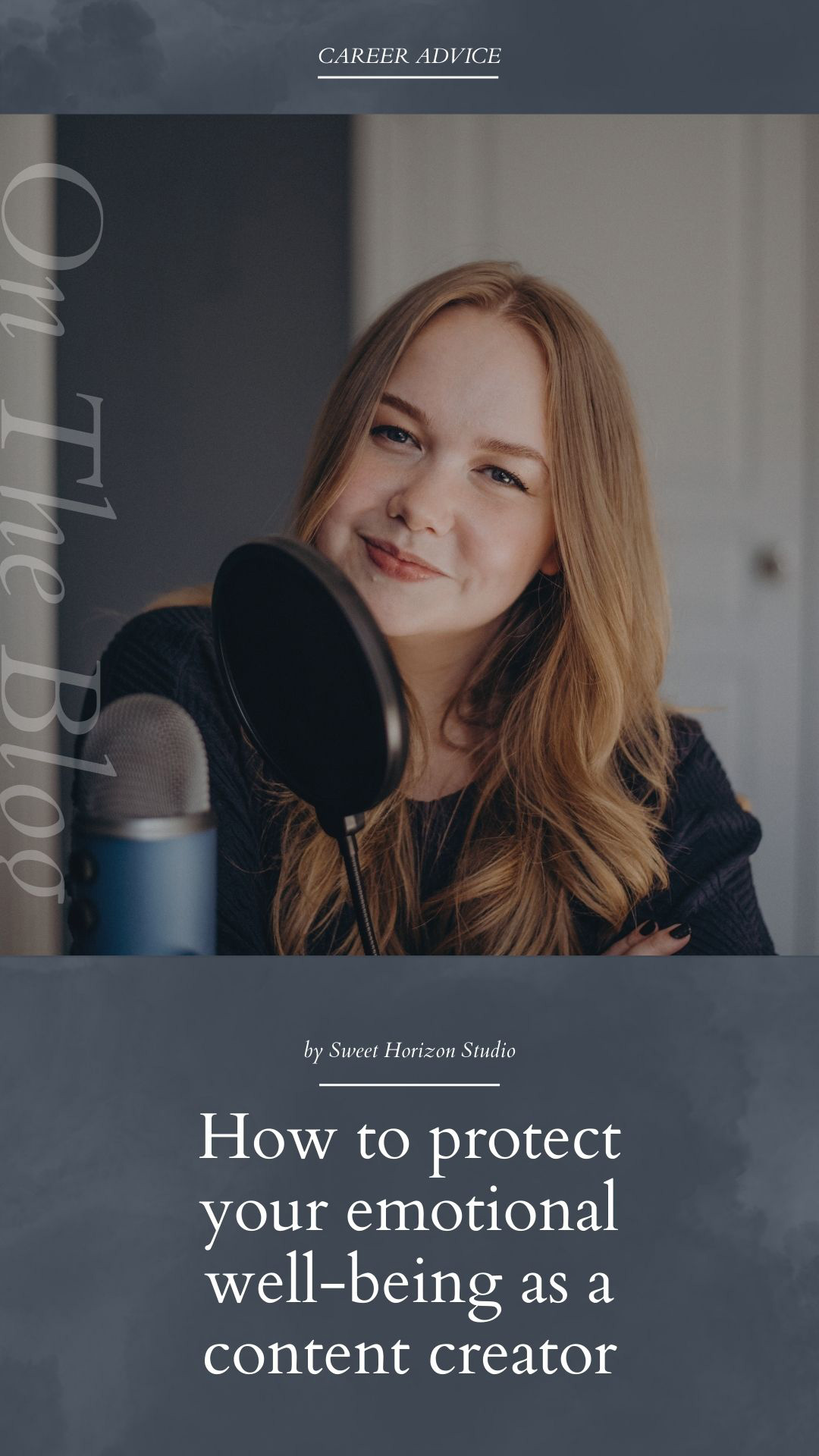
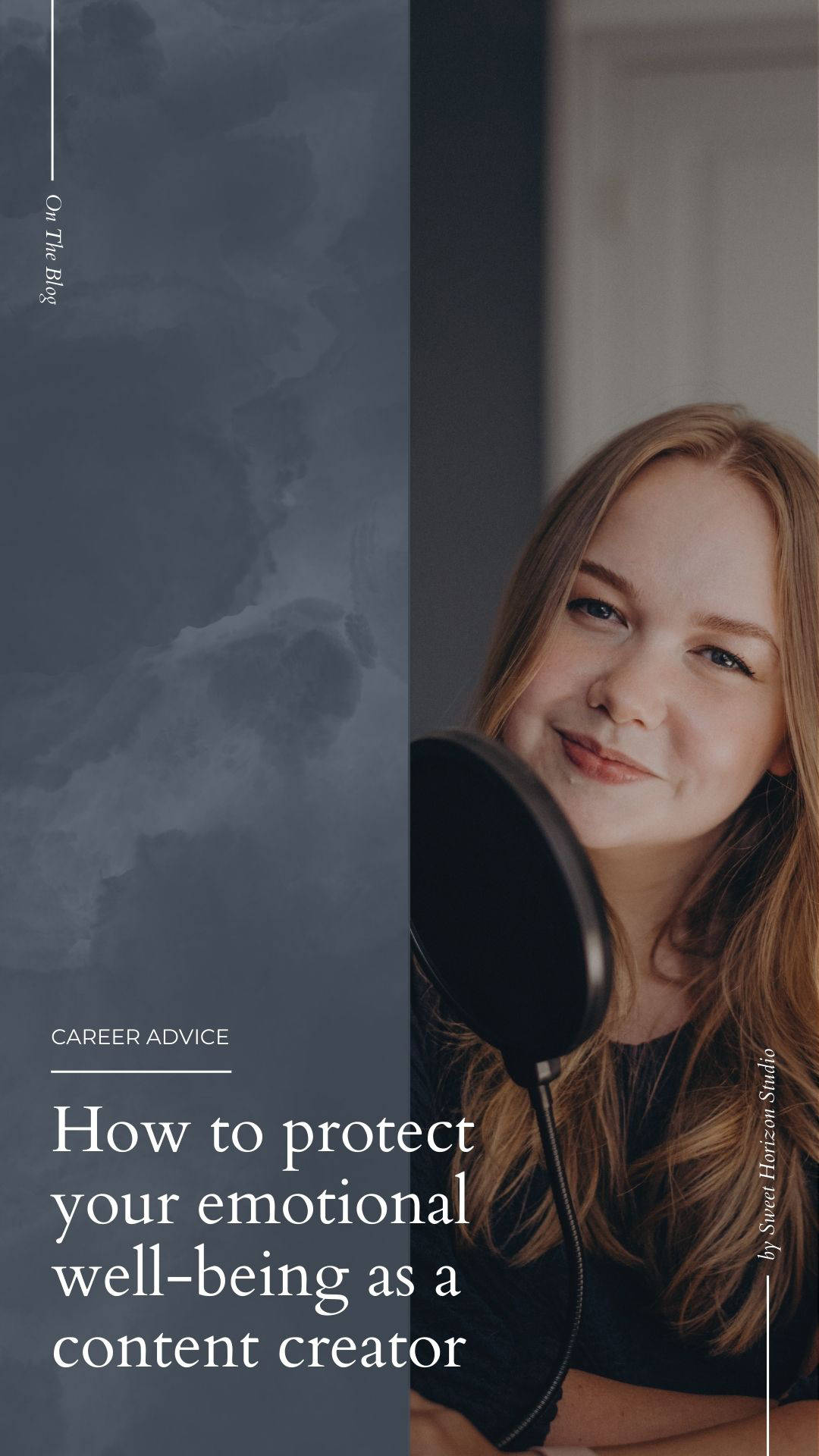
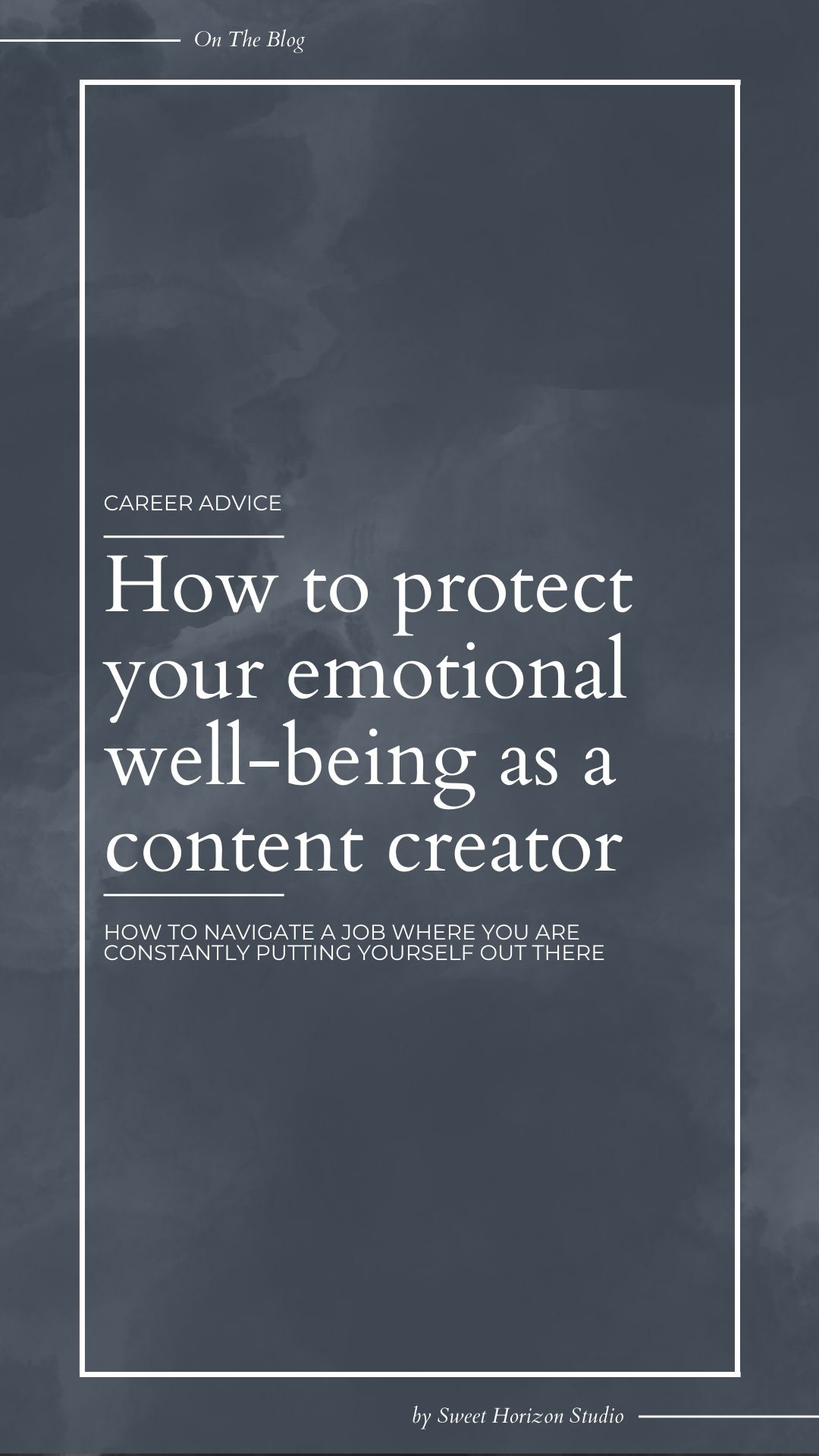
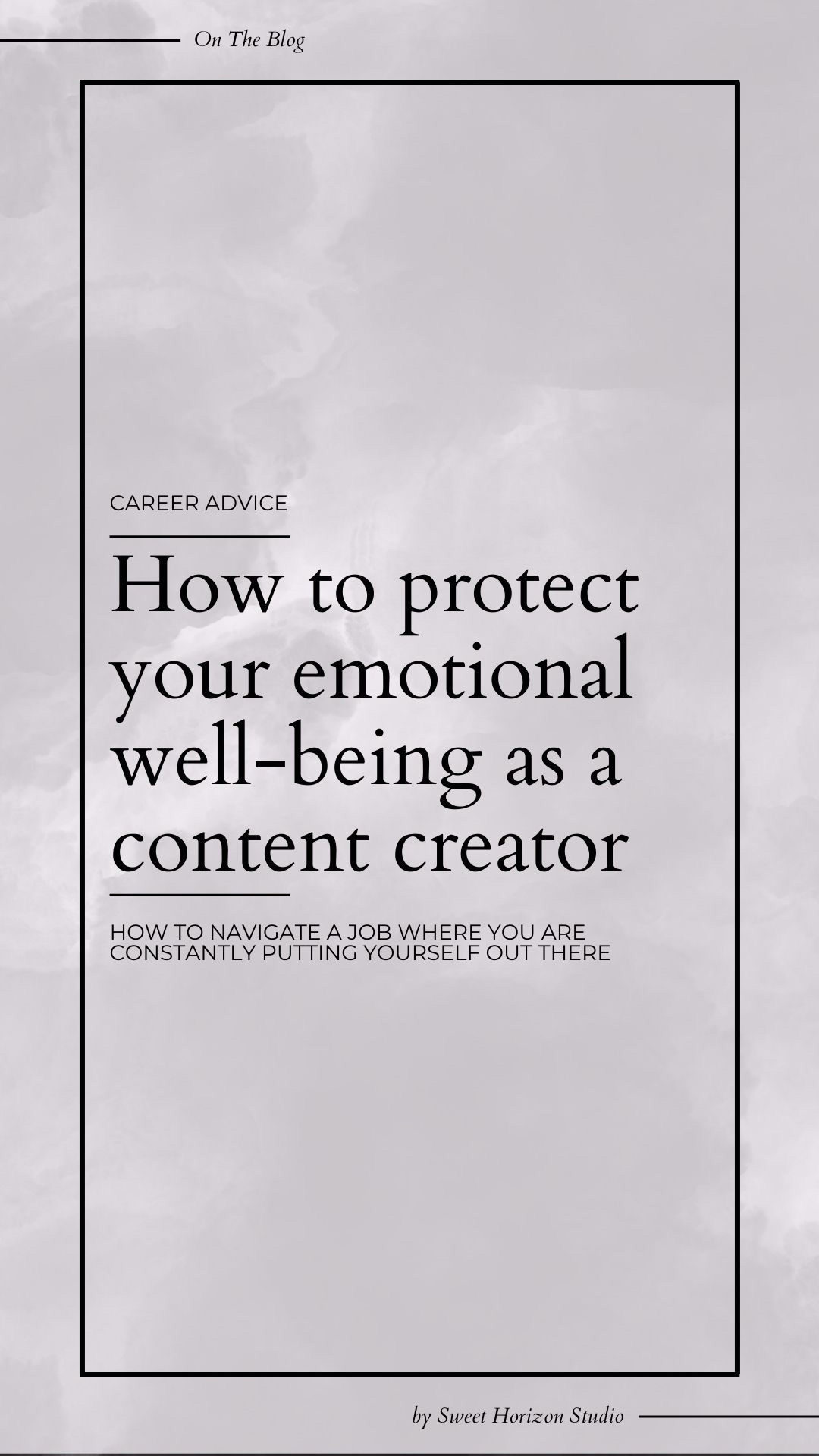
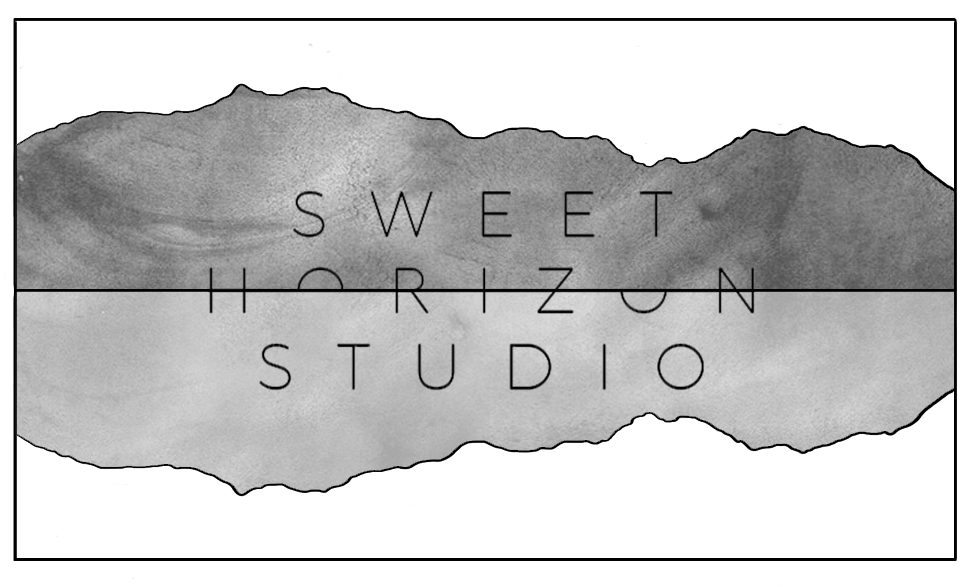
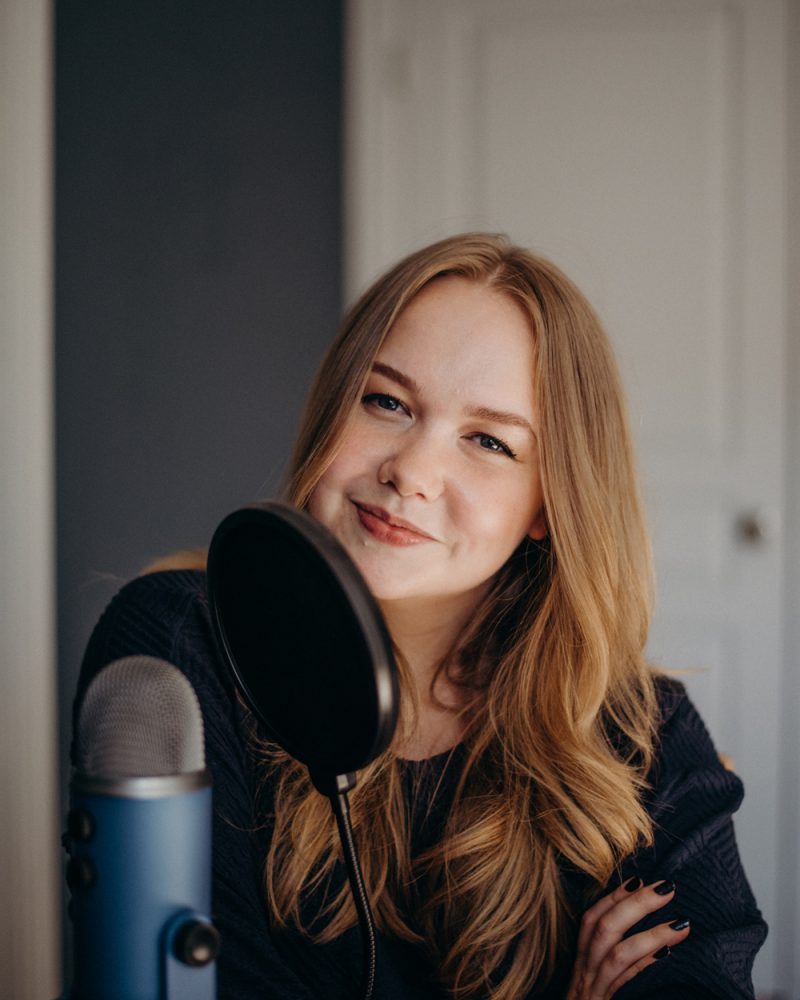
Follow Along:
Pinterest
|
Instagram
|
Spotify